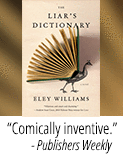The Empty Mirror
J. Sydney Jones
book reviews:
· general fiction
· chick lit/romance
· sci-fi/fantasy
· graphic novels
· nonfiction
· audio books
· author interviews
· children's books @
curledupkids.com
· DVD reviews @
curledupdvd.com
newsletter
win books
buy online
links
home
for authors
& publishers
for reviewers

 |
The Empty Mirror J. Sydney Jones St. Martin's Minotaur Hardcover 320 pages January 2009 |
|
Whispers from the past echo throughout this multi-layered historical mystery that centers on the events surrounding the enigmatic death of Crown Prince Rudolf and the tragic events that rocked the court and all of Austria in 1889. Playing out in the candlelit rooms of the Mayerling country estate almost a decade ago, anarchy and terrorism compete with syphilis-ridden royalty while the warm wind blows off the Alps and the steadiest of men become unnerved.
Esteemed criminologist Hanns Gross and Professor Karl Werthen are unexpectedly thrust into the investigation when the noted and notorious artist Gustav Klimt suddenly bursts into Werthen’s home, exasperated that he, “the bete noire of Viennese paintings,” has in fact become a possible suspect. Although Liesel did in fact pose nude for Klimt the day she was murdered, the artist denies any involvement in her demise. Klimt has a scandalous reputation, but both Gross and Werthen are convinced that the artist is innocent. The two amateur sleuths visit the city morgue to view the mutilated corpse of the fourth victim. All the victims have had their noses sliced off, detached with a single clean swipe, along with a small clean cut through the flesh and sinew of the neck. The blood has been drained, and all five victims appear to have been “squeezed as dry as a shirt on laundry day.” As Gross and Werthen uncover a series of potential perpetrators, the tentacles of history are revealed. The murders may be representative of something far more sinister at work, something perhaps connected to the worlds of aristocracy and privilege, reaching right into the rarefied world of the Hapsburgs. When the waters are eventually muddied, a startling mix of diversions, red-herrings and false leads keep Gross and Werthen off-track. As they race against time and circumstance, Prince Rudolf’s apparent suicide and the life and death of his young mistress, Marie Vestera, provide the unanticipated connection to the final denouement. Written with a fine sense of the period (although the narrative is sometimes weighed down by it), much of the action in this novel plays out amid an aggressive Franz Josef, who holds steadfast to his rule even as social unrest permeates and the country seems to seethe with anger. Werthen and Gross remain colorful and likeable protagonists, committed to solving the murders despite the long odds, their respective talents and friendship feeding their success as they maneuver through a jigsaw puzzle of facts to uncover a new and terrifying kind of cold-blooded killer. Originally published on Curled Up With A Good Book at www.curledup.com. © Michael Leonard, 2009 |
|
|
|
 Click here to learn more about this month's sponsor! |
|
| fiction · sf/f · comic books · nonfiction · audio newsletter · free book contest · buy books online review index · links · · authors & publishers reviewers |
|
| site by ELBO Computing Resources, Inc. | |
 A smorgasbord of social and political detail on 19th-century Austria,
A smorgasbord of social and political detail on 19th-century Austria,